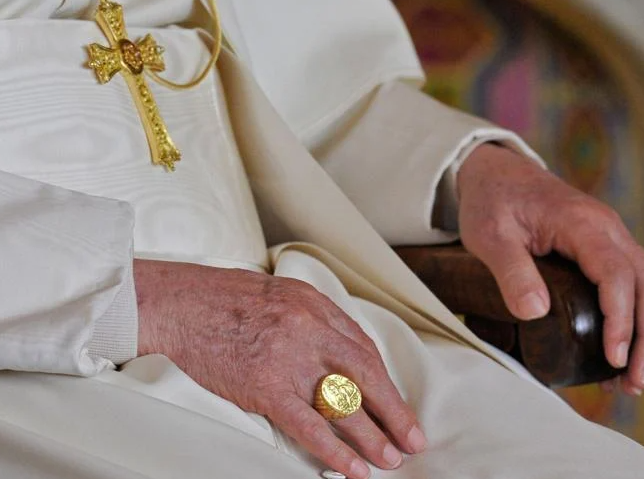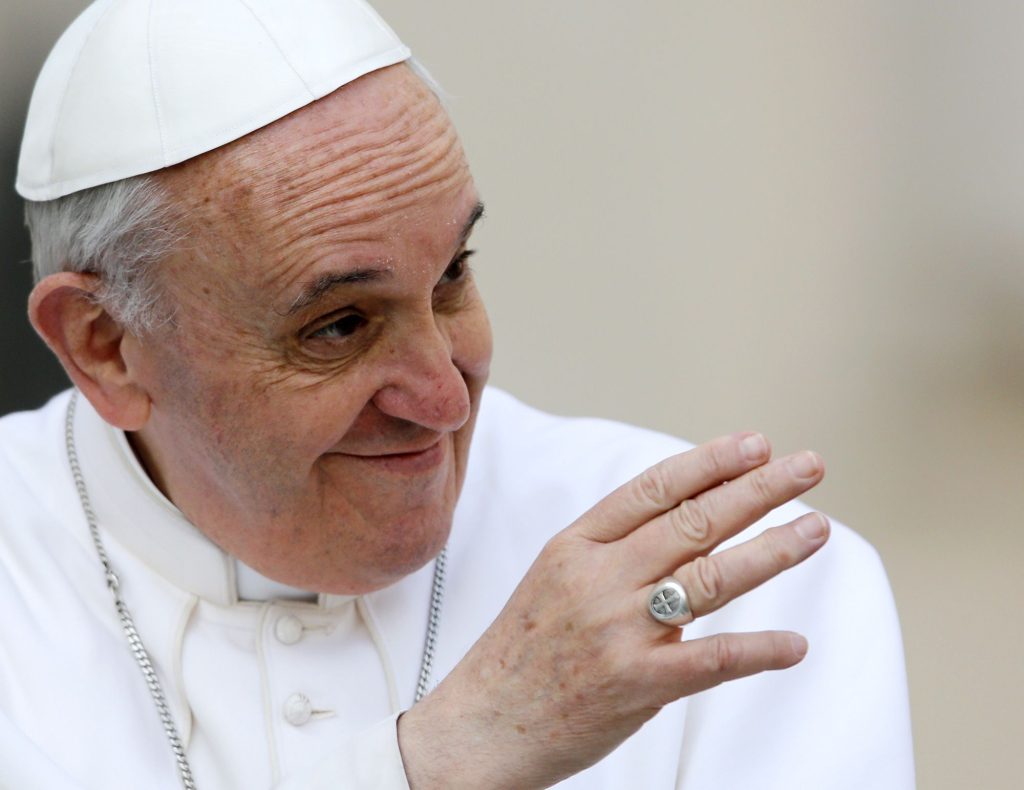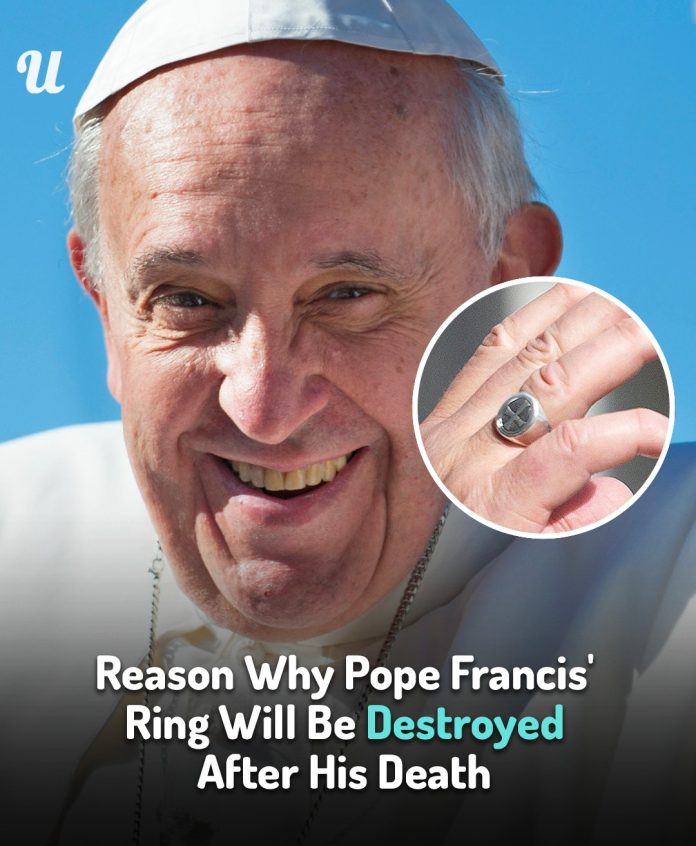The Fisherman’s Ring, also known as the Piscatory Ring, holds profound significance within the Roman Catholic Church. Traditionally bestowed upon each newly elected pope during their inauguration, this ring symbolizes the apostolic authority of the pontiff, tracing its origins back to Saint Peter, the fisherman apostle and the first Bishop of Rome. The ring typically features an image of Saint Peter casting his net, accompanied by the reigning pope’s name inscribed in Latin. Historically, it served as a seal for private papal correspondence, ensuring the authenticity of documents emanating from the Holy See. Although its practical use as a seal ceased in the 19th century, the ring remains a potent emblem of the papal office.

Upon the death of a pope, the Church observes a series of rituals to signify the end of his papacy and to safeguard the integrity of the Holy See. One such ritual involves the ceremonial destruction of the Fisherman’s Ring. This act is carried out by the Camerlengo, the cardinal responsible for administering the Church during the interregnum period known as “sede vacante.” The destruction of the ring, often by hammering or defacing, serves both symbolic and practical purposes: it marks the conclusion of the deceased pope’s authority and prevents any potential misuse of the ring to forge documents.
In the case of Pope Francis, who passed away on April 21, 2025, at the age of 88, these traditions are being upheld. Cardinal Kevin Farrell, appointed as Camerlengo in 2023, is overseeing the rites associated with the papal transition. Following the confirmation of Pope Francis’s death, Cardinal Farrell is tasked with the destruction of the Fisherman’s Ring in the presence of the College of Cardinals. This act not only adheres to centuries-old customs but also ensures the security and continuity of the Church’s governance.
Pope Francis’s approach to the Fisherman’s Ring reflected his commitment to humility and simplicity. Eschewing the creation of a new, ornate ring, he chose to use a gold-plated silver ring that had previously belonged to the secretary of Pope Paul VI. This decision was emblematic of his broader efforts to present a more modest image of the papacy. Moreover, Pope Francis was known to reserve the wearing of the Fisherman’s Ring for formal occasions, opting for a simpler silver ring in his daily life. His reluctance to have the faithful kiss the ring, a traditional sign of reverence, further underscored his desire to foster a more approachable and less hierarchical Church.

The destruction of the Fisherman’s Ring is one of several rituals that occur during the interregnum period. Following the pope’s death, the Church enters a nine-day mourning period known as “novendiali.” During this time, preparations are made for the conclave, the gathering of cardinals under the age of 80 who will elect the next pope. The conclave is held in the Sistine Chapel, where the cardinals are sequestered until a new pope is chosen. The election is signaled to the world by the appearance of white smoke from the chapel’s chimney, accompanied by the announcement “Habemus Papam” (“We have a Pope”).
In conclusion, the destruction of Pope Francis’s Fisherman’s Ring is a ritual steeped in tradition, symbolizing the end of his papacy and ensuring the integrity of the Church’s succession process. This act, along with other ceremonial practices, underscores the Church’s commitment to preserving its rich heritage while navigating the transition to new leadership.

















